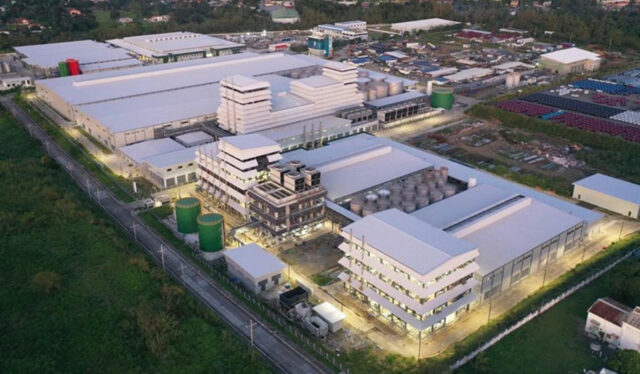Empowering LGUs: The key to unlocking regional growth in the Philippines

By Ildrim Valley and Kevin Cruz
The Philippines has made steady economic progress since 2010, doubling its GDP, reducing unemployment, and creating millions of jobs. Much of this growth was driven by spatial convergence, with poorer regions growing faster than richer ones. From 2009 to 2022, labor productivity in low-income regions grew by 3.2% annually, outpacing Metro Manila’s 1.5% growth.
This helped narrow regional gaps, but disparities remain large. Not all Filipinos enjoy the same standard of living. Poverty incidence is the lowest in Metro Manila (NCR), as it continues to dominate the national economy, contributing over 30% of the country’s income. The Bangsamoro Autonomous Region in Muslim Mindanao (BARMM) has experienced significant progress over the past decade but continues to lag far behind. Its average worker earns just one-sixth of what a worker in Metro Manila does, with the overall income levels comparable to some of the world’s poorest countries.
Bridging this gap is not only a matter of fairness; sustaining spatial convergence is essential for sustaining fast growth. At the heart of this challenge lies a powerful but underutilized force: the country’s Local Government Units (LGUs).
WHY LGUs MATTER FOR GROWTH
LGUs are not just administrative units. They are the boots on the ground, the first responders to community needs, and the architects of local progress. Under the 1991 Local Government Code, LGUs were granted significant autonomy. This means they directly influence trade, investment, and access to core services like health. Their proximity to communities positions them uniquely to tailor development strategies to local needs, making them essential players in driving inclusive growth.
Experiences from other countries reinforce the importance of strong local governance. In India, the state of Kerala’s decentralized planning helped achieve some of the country’s best health outcomes. In Brazil, cities like Porto Alegre used participatory budgeting to improve public trust and service delivery. Meanwhile, complementing a comprehensive industrial strategy South Korea’s local governments played a key role in supporting small and medium enterprises, helping drive the country’s rapid industrialization. These examples show that when local governments are empowered and accountable, they can be powerful engines for growth.
In Philippines, many services have been devolved to LGUs, but there is room to improve capacity and governance as well as creating incentives for better execution and delivery.
MONEY MATTERS BUT ISN’T EVERYTHING
The 2019 Mandanas ruling further strengthened the LGUs’ role by increasing their share of national tax revenues, thus increasing their budgets. In 2022, LGUs received 4.4% of GDP in transfers, up from 2.9% in previous years. This increase in LGU budgets pushed subnational spending to 6% of GDP, comparable to what we see in upper-middle-income countries. This opens new opportunities for LGUs to lead in local development through more and better-quality services in infrastructure, education, and health investments.
Despite the boost in funding, many LGUs struggle to turn budgets into results. In the recently published World Bank Growth and Jobs report we show that local governments consistently under execute their budgets by over 20%. When it came to money set aside for big projects like infrastructure, only a little over half was used, meaning much of the funding remained untouched. That means half of the funds meant for infrastructure and development projects go unspent.
Why does this happen? Limited technical expertise, bureaucratic bottlenecks, and uneven governance all contribute. Wealthier LGUs tend to perform better, while poorer ones face more severe capacity and funding constraints. Without targeted support, these disparities risk becoming entrenched — undermining development where it is needed most.
First, many LGUs lack technical expertise, systems, and staffing needed to plan and implement complex projects. Without the right people and tools in place, even well-funded programs can stall. This challenge is especially acute in smaller or poorer LGUs, where attracting and retaining skilled personnel is difficult.
Second, there are few incentives for LGUs to improve performance. Funding is typically allocated based on formulas, not results. Whether a project is completed or left unfinished, the money still comes in. This weak link between funding and outcomes makes it harder to hold local governments accountable or encourage them to improve.
Third, most LGUs rely heavily on transfers from the National Government, underpinned by weak own-source revenue generation. While these transfers are essential, they can limit local autonomy and responsiveness. This dependence and lack of local revenue generation also weaken accountability, when resources come from the center, local officials may feel less pressure to answer their constituents.
GOOD GOVERNANCE = GOOD JOBS
Here’s the good news: when LGUs are well run, they deliver. The quality of local governance has a direct impact on economic outcomes. Regions with higher scores that measure governance efficiency and business friendliness show higher labor productivity and more formal employment.
Better governance means better services and human capital, more transparent regulations, and a more attractive environment for investors including smoother and transparent licensing and local regulations. In short, it means better jobs and better lives.
Improving governance at the local level is therefore essential. Streamlining permitting processes, like business licenses and construction permits, enhancing transparency, and aligning local regulations with national standards can make LGUs more attractive to investors and more responsive to citizens’ needs.
To unlock the full potential of LGUs, several reforms are needed:
Strengthen local capacity; people and systems: Many LGUs face challenges in planning and delivering services because they lack the right skills and tools. Investing in training and mentoring for local staff can help improve how projects are designed and implemented. But it’s not just about people, LGUs also need better systems for budgeting, tracking progress, and managing resources. Stronger teams supported by reliable systems can help LGUs make better use of public funds and deliver services that truly meet community needs.
Consider performance-based transfers: While LGUs now receive a larger share of national revenues, the effectiveness of spending varies widely. Linking funding to measurable outcomes, such as infrastructure completion rates, improved management of public funds, a regulatory environment, or service delivery outcomes, can incentivize better governance and ensure that resources translate into results.
Enhance fiscal autonomy: Local governments often depend heavily on national transfers, which can limit their ability to respond to local priorities. Giving LGUs more control over how resources are managed, such as allowing them to exert more control over the taxes and fees already assigned to them and strengthening systems over service-based fees and property taxes, can help align spending with community needs. These approaches link payments to services consumed and encourage more accountable and responsive local governance.
These reforms can empower LGUs to become engines of growth, capable of driving spatial convergence and reducing inequality across regions.
The Philippines’ journey toward a middle-class, poverty-free society by 2040 hinges not just on national policies but on local action. LGUs are uniquely positioned to deliver inclusive development, if they are given the tools, resources, and autonomy to do so. By investing in LGU capacity and governance, the country can unlock growth in every corner of the archipelago and ensure that prosperity is shared by all.
Ildrim Valley is a public sector specialist based in Manila, with over a decade of experience in policy advisory, operations, and research across regions and countries of varying income levels. His work focuses on subnational governance, fiscal management, and tax reforms.
Kevin Cruz is the country economist for the Macroeconomics, Trade, and Investment Global Practice. He currently leads the macroeconomic monitoring program of the World Bank Philippines and is working on fiscal policy issues for the Philippines. Prior to joining the Bank, he worked in various research institutes in the University of the Philippines Diliman.













